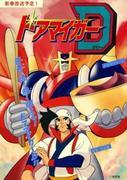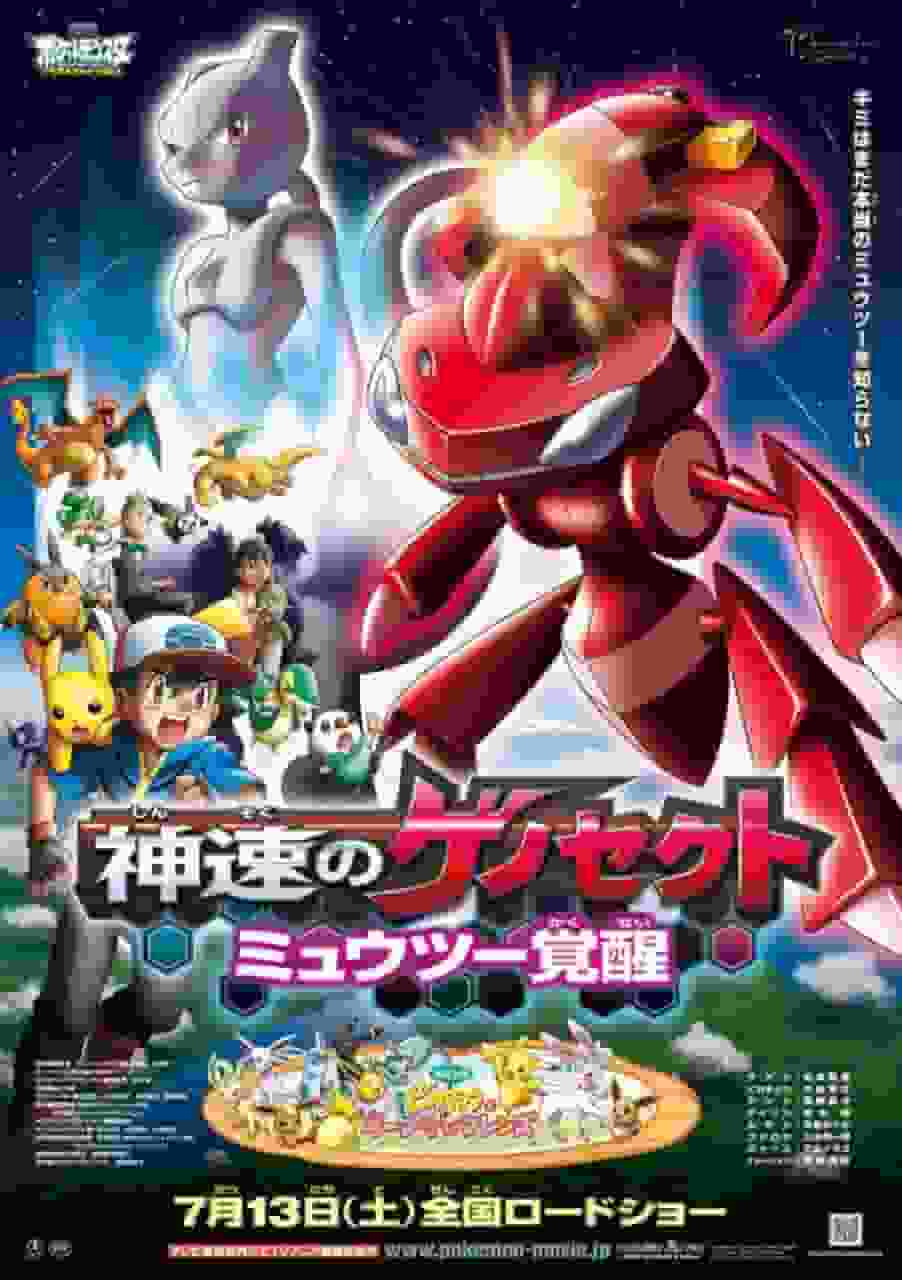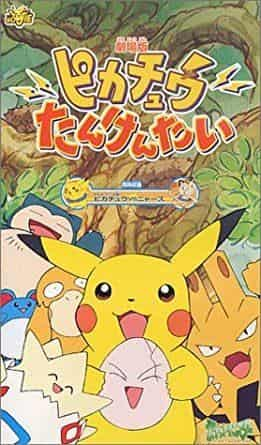The Story of the Strong Boy Who Killed a Bear: Evaluating the Strength and Courage of Tetsuwan Kintaro

The Story of the Strong Boy Who Killed a Bear - The Story of the Strong Boy Who Killed a Bear■ Public Mediaothers ■ Original MediaAnime Original ■ First appearance dateJanuary 1, 1934 ■ Number of EpisodesEpisode 1 ■ Production・Production company unknown ■ Storydetail A little boy sleeping in a baby carriage wakes up and goes for a walk in town. He gives a big bear that has escaped from the circus some alcohol, captures it alive, and then returns to sleep in the baby carriage. ■Explanationdetail Around this time, Seo Mitsuyo was undertaking a commercial for "Wakamoto," so this is thought to be a film for that brand, but perhaps the parts that would have been relevant have been cut out of the extant film and are not included. ■ Main staffdetail・Illustration by Mitsuyo Seo The Story of the Strong Boy Who Defeated a Bear - Detailed Review and RecommendationBackground and historical significance of the workReleased in 1934, "Gourikibou Yaji no Kami Jiji" (The Boy Who Defeated a Bear) was a milestone in the Japanese animation film industry at the time. This work was created by the master Mitsuyo Seo, and its unique storytelling and visual expression had a major influence on later animation works. In particular, the simple yet impactful story of a boy getting out of his baby carriage to defeat a giant bear left a lasting impression on viewers. The film was released in 1934, a time of peace when Japan was not yet shrouded in the shadow of war, and animation films were in their infancy. In that context, "Gourikibou and the Bear Hunter" was not only praised as entertainment that gave children hope and dreams, but also as a work of artistic value. Story appeal and analysisThe story of "The Tale of the Strong Boy Who Kills a Bear" is very simple, but that simplicity actually enhances the appeal of the work. It begins with an everyday scene of a little boy waking up from his stroller and going for a walk into town. However, during the walk he encounters a large bear that has escaped from the circus, gets him drunk, and captures him alive, surprising and exciting the viewer. The ending, in which the little boy returns to sleep in his stroller, gives viewers a sense of relief and satisfaction after the adventure. This story also contains an allegorical element that teaches children the importance of courage and wisdom. The idea of the boy getting drunk to kill the bear shows the importance of using wisdom to overcome difficulties. Also, the ending where the boy goes back to sleep in his pram symbolizes rest and security after the adventure, giving children a sense of security and fulfillment after the adventure. Visual and illustration evaluationThe visuals and drawings in "The Tale of the Great Boy Who Kills a Bear" are shining with Mitsuyo Seo's unique style. In particular, the boy's facial expressions and movements are extremely realistic, encouraging the viewer to empathize with him. The depiction of the giant bear is also extremely realistic, and its power instills a sense of fear in the viewer. Furthermore, the backgrounds are detailed, realistically recreating the Japanese townscape of the time. Mitsuyo Seo's drawings are highly regarded for their technical ability and artistry, as they demonstrate the greatest expressiveness within the technical limitations of the time. In particular, the dynamic movements of the scene where the main character gets out of the stroller and defeats the giant bear leave a strong impression on the viewer. The humorous depiction of the scene where the main character is given alcohol also invites laughter from the viewer. Music and Sound EvaluationThe music and sound in "The Story of the Bear Slaying Boy" are important elements that make the story more exciting. In particular, the music that heightens the tension in the scene where the big bear appears, and the humorous sound effects in the scene where the boy gives the bear alcohol, leave a strong impression on the viewer. In addition, the quiet music in the scene where the boy returns to sleep in his stroller gives the viewer a sense of security. The music and sound in this work demonstrate the maximum expressiveness within the technical constraints of the time, and its technical skill and artistry have been highly praised. In particular, the realistic sound effects, such as the roar of the bear and the footsteps of the boy, give the viewer a sense of reality. The music selection also matches the story and enhances the viewer's emotions. Character Appeal and AnalysisThe characters in "The Story of the Strong Boy Who Defeated the Bear" are very attractive and unique. In particular, the little boy sleeping in the stroller leaves a strong impression on the audience as the main character, endowed with courage and wisdom. The big bear that escaped from the circus scares the audience, but at the same time, it also has a humorous side. The character of the little boy contains an allegorical element that teaches children the importance of courage and wisdom. In particular, the idea of making the boy drink alcohol shows the importance of using wisdom to overcome difficulties. The character of the big bear also gives the viewer a sense of fear, but at the same time has a humorous side that makes the viewer laugh. Influence and Evaluation of the Work"Gourikibouya Bear Slaying" had a major impact on the Japanese animation film industry at the time. In particular, Mitsuyo Seo's unique drawing style and storytelling had a major impact on later animation works. This work was also praised not only as entertainment that gave children hope and dreams, but also as a work that had artistic value. The influence of this work can be seen in later animation works. In particular, the allegorical elements that teach children the importance of courage and wisdom, and the humorous depictions were often incorporated into later animation works. Mitsuyo Seo's drawing style also had a great influence on later animation artists, and his technical skill and artistry are highly regarded. Recommendations and how to watch"The Tale of the Bear Hunter" is a film that can be enjoyed by both children and adults, and is highly recommended for those who are interested in the history and artistry of animation films. It also has educational value, as it contains an allegorical element that teaches children the importance of courage and wisdom. This work is now a very valuable film, and opportunities to see it are limited. However, it is sometimes screened at specialized cinemas and animation film events, so we recommend taking advantage of these opportunities to watch it. Also, reading information and reviews about this work on the Internet can help you understand it better. summary"Gourikibouya Kuma Taiji no Maki" is an animated film released in 1934 that highlights Mitsuyo Seo's unique drawing style and storytelling. The film also has educational value, as it contains allegorical elements that teach children the importance of courage and wisdom. It also demonstrates the maximum expressiveness within the technical constraints of the time, and is highly regarded for its technical skill and artistry. Opportunities to watch it are limited, but it is sometimes screened at specialized movie theaters and animation film events, so we recommend taking advantage of these opportunities to watch it. |
<<: My Lifeline: A moving story that depicts the realities of youth
Recommend
Brad Pitt's new action film revealed, directed by the director of "Deadpool 2"
Brad Pitt will star in Sony Pictures' action ...
The moving and appealing aspects of "This Love to My Sister": A thorough analysis of Minna no Uta's masterpiece
"This Love to My Sister": A story of pu...
The heroine of the live-action version of "The Little Mermaid" shares new photos. Is she beautiful?
Recently, Halle Bailey, the heroine of Disney'...
Parasite director has completed script for new film
"Parasite" director Bong Joon-ho has no...
Sega mobile game adapted "Blue Knights" TV animation new trailer confirmed to start broadcasting on January 6, 2021
Sega's famous mobile game "Blue Knights&...
The Witcher series Keira actor responds to controversy: Sorry I'm not that sexy
In the third season of The Witcher, Safiya Ingar ...
Super boring! Zack Snyder's sci-fi film "Moon Rebels 1" IGN 4 points
Media reviews for Zack Snyder's new sci-fi fi...
The live-action movie of the classic comic "The Promised Neverland" officially announced that it will be released on December 18
The live-action movie of the classic anime "...
The appeal and reviews of the animated vehicle series: What are the must-see titles?
Anime Vehicle Series - Anime Norimono Series over...
The new Batman has officially started filming and will be released on June 25th
Today (January 28), the new "Batman" di...
Xu Zheng's "Lost in Russia" series "Lost in Russia" starts filming today and is scheduled to be released on the first day of the Chinese New Year in 2020
Today, Xu Zheng's new movie "Lost in Rus...
Review of "Mai Mai Shinko and the Thousand Year Magic": A fusion of moving story and beautiful images
"Mai Mai Shinko and the Thousand Year Magic&...
Venom 2 director confirmed! Expected to be released in October 2020
Andy Serkis confirmed on Twitter today that he wi...
The new movie version of Kamen Rider: The Double Heroes Arrive has been released and will be released on December 21st
The latest special drama of the popular Plastic S...
China's total box office in 2021 exceeded 10 billion, and Jia Ling became the highest-grossing female director in film history
According to media reports, real-time data from L...









